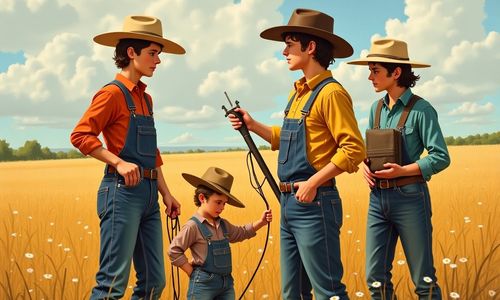
A The Farmers trading company began in 1909 when Scottish immigrant Robert Laidlaw established a mail-order company called Laidlaw Leeds in Fort Street Auckland. He then opened branches via the purchase of the Green & Colebrook chain store, and further regional stores in Auckland and Waikato followed. Then their first furniture and boot factory was opened, and by 1920 the company had 29 branches. A store in Whangarei was purchased, and Hobson Street was opened for direct selling to the public. The firm then went international, establishing London and New York purchasing offices. With permission from the local harbor board, a large Farmers electric sign on the Wyndham Steet front was installed.
B It seems that Robert Laidlaw was ahead of his time as an entrepreneur. He might have been scripting a modern-day commercial when he said “Satisfaction, or your money back”. Business historian Ian Hunter commented, “It was the first money back guarantee ever offered in New Zealand by any firm, and this statement was only the second one ever found in the world. ”Laidlaw's mission was simple - to build the greatest business in New Zealand,to simplify every transaction, to eliminate all delays, and to only sell goods that are practical for customers.
C This company, which had humble beginnings as a mail-order business, now employs 3,500 staff in 58 stores, and has just celebrated its hundredth anniversary. Ian Hunter, who is also the author of a history book, says that coming to Farmers every week is part of the New Zealand way of life, and in the 1960s, one in ten people had an account with Farmers. By that time, Farmers was the place for girls to buy their first bra, newlyweds to purchase their first diner-sets, new workers to use their first pay-cheques to pay off hire-purchase furniture,and the best place to see Santa every Christmas. At one time it had tearooms, children's playground, and an annual celebration of the birthday of Hector the Parrot who died in the 1970s aged 131. At one time, you could even buy houses from Farmers. There was also a saddle factory which supplied the armed forces, and its upright grand pianos offered good value, according to early catalogues.
D Farmers has changed considerably from that time. Walking through a Farmers store today you will be drawn by the bright lights and big brands. Its Albany branch hosts 16 international cosmetics companies. The store purchases from about 500 suppliers-with about 30 of those being locally owned. “10 years ago, ”says current CEO Rod McDermot, “lots of brands wouldn't partner with us. The stores were quite distressed. We were first price point focused;we weren’t fashion focused. ”Farmers is, quite simply, a company that does business in hard times with no room for sentimentality. For example, regarding the occasion when Dancing with the Stars presenter Candy Lane launched a clothing line, McDermott commented, “We put a trial on, and we thought it was really lovely, but the uptake wasn't what we thought it would be. It's got to be what the customer wants. ”
E McDermott also acknowledges the achievement of Farmers in making one-hundred years,because retailers are often badly hit when the economy turns down. Farmers almost didn't survive one economic crisis in the mid-1980s, by which time it had stores across the country. It had purchased the South Island's Calder Mackay chain of stores, and bought out Haywrights. With sales topping $375 million, it was purchased by the Chase Corporation. Lincoln Laidlaw, son of the founder Robert, recalls the dark days of the stock market crash and the collapse of Chase: “I think, once, Farmers was like a big family and all of the people who worked for it felt they were building something that would ultimately be to their benefit and to the benefit of New Zealand then the business was being divided up and so that kind of family situation was dispelled and it hasn't been recovered. ”During this turbulent period, the stores were controlled by a variety of Australian banks, followed by Deka, the Maori Development Corporation and Foodland Associated Ltd. Finally, in 2003 the ownership changed to family-style after it was purchased by the James Pascoe Group, owned by David and Anne Norman.
F McDermott attributes the survival of the company through difficult times to its power of brand, and commented that, “We're becoming the brand it used to be again. ”Why was the brand so powerful? During World War II, Farmers topped up the wages of any staff member disadvantaed by overseas service. Laidlaw was a committed Christian, and he concluded his original mission statement with the powerful words: “All at it, always at it, wins success." Around 58 stores across New Zealand have announced the local charities they have selected to raise funds for during their centenary celebration - it is likely to include everything from guide-dog services to hospices and volunteer fire brigades. Every dollar raised by the community will be matched by the company. “It’s like the rebirth of an icon,"says McDermott.